Village Montessori Blog
How to Teach Your Child to Read - or to do Anything

At Village Montessori, our curriculum includes the two methodologies of Montessori and Science of Reading (SOR) to foster independence, a love for learning and an ease of reading. These two methodologies go hand-in-hand because both methods are backed by science on how the brain learns.
We use a simple teaching technique called the Three-Period Lesson in our Montessori classrooms. You might also hear this called the gradual release of responsibility in SOR circles. You can use the Three-Period Lesson, or gradual release of responsibility, to help teach reading, as well as truly anything you want to teach your child.
First, the lesson needs to be modeled. Second, the lesson needs to be supported as your child works towards independence. Finally, your child needs opportunities to do the lesson independently.
Steps of the Three-Period Lesson:
- Modeling is the first period where you are simply showing your child how to do something - the introduction phase.
- Supporting is the second period when you do the lesson with your child and ask them to show you how to do the work while you assist - the recognition phase.
- Independence is the third period when you ask your child to do the lesson on their own - the comprehension phase.
The Three-Period Lesson in Action:
- Write various words on a sheet of paper and show your child - This word is cat, and it rhymes with rat.
- Ask your child - Show me the word that rhymes with cat (list rat among a few other word options from which they can choose).
- Ask your child - Can you make two rhyming words (out of a few word options from which they can choose).
- Progression through these three periods is progress towards your child's independence.
You may need to spend more time in period one and two before moving to period three. That’s OK. Allow ample opportunity for period one and two and your child will eventually want to take these steps independently.
The Three-Period Lesson can be summed up as - I do, we do, you do. Use this to teach everything from loading the dishwasher to learning to read to filling out a job application. Working side by side with your child until they master a skill will provide them with the confidence to tackle tasks independently and with confidence.
To learn more about our Top-Rated Preschool in Fort Mill, SC - as well as both our Montessori and Science of Reading curriculum - visit our website or schedule a tour to see our classrooms in action!
Lisa Sheen
Science of Reading Advocate & Founder of Village Montessori & Preparatory School
Creator of The Reading Brain Courses
#scienceofreadingofficial on IG
The Role of Learning Intervention Services in Early Childhood Education
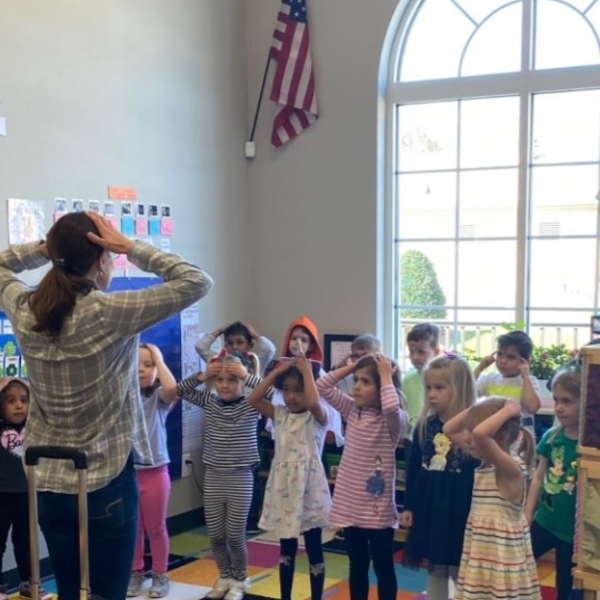
Early childhood education plays a vital role in shaping a child's cognitive, emotional, and social development. During these formative years, children absorb information at a rapid pace, and early educational experiences greatly influence their future learning path. Learning Intervention and Educational Services provide additional support for children who face challenges in meeting developmental milestones, ensuring they receive the right help at the right time. These services bridge potential learning gaps, fostering a positive relationship with education from an early age.
Key Benefits of Learning Intervention Services
Tailored intervention programs focus on individual learning needs, offering targeted solutions. Early detection of areas where a child struggles is essential to preventing these challenges from escalating over time. With proper learning support, children can overcome difficulties in areas such as literacy, motor skills, and language development. These services also promote self-confidence, helping children participate more actively in group activities and social settings.
Finding the Right Learning Environment
Families searching for the Best Preschools in Fort Mill often prioritize institutions that integrate learning intervention services. High-quality preschools combine early childhood education with structured support systems to help children thrive both academically and socially. This dual approach ensures children are prepared for early childhood education and beyond. Institutions that emphasize such services work closely with parents to monitor progress, set achievable goals, and make timely adjustments based on the child’s evolving needs.
Investing in early childhood education through Learning Intervention and Educational Services ensures children receive the necessary support to build a strong educational foundation. Selecting a preschool that integrates these services enhances the learning experience and nurtures well-rounded development. At Village Montessori, we are committed to providing the best possible care and educational support, empowering every child to succeed.
Why Montessori and How it Compares to Traditional Daycare
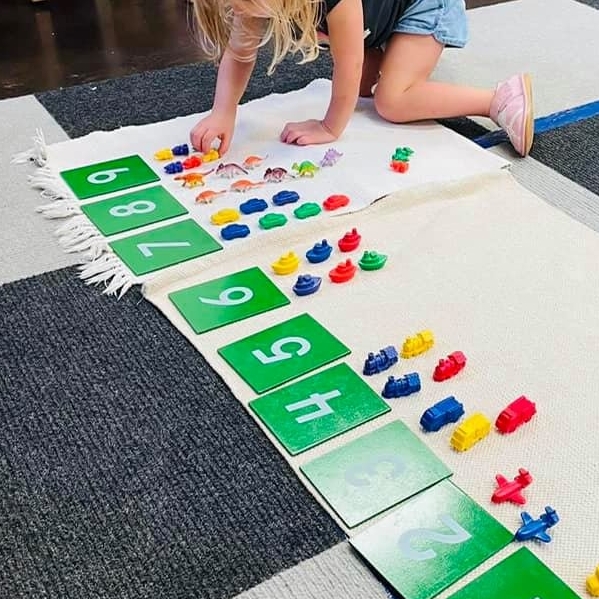
Choosing between traditional daycare and a Montessori education is simple when you consider how children’s brains learn, which is by explicit introduction of material, lots of repetition and hands-on learning that make tactile connections with the brain.
The Montessori approach stands out for its ability to foster independence and provide materials that extend beyond an age-specific curriculum. While traditional daycare provides supervision and group play, a Montessori environment nurtures a child’s natural inclination to learn by incorporating freedom of choice and movement.
Here’s a look at why the Montessori approach offers a richer educational experience for young children.
1. Concrete Learning: Engaging the Senses for Real Understanding
Montessori materials are designed to engage all senses, making learning more concrete and memorable. Unlike traditional daycare’s passive learning, Montessori activities encourage children to explore and manipulate materials that teach size, shape, color, and other essential concepts. This hands-on approach helps children build lasting knowledge through real-world connections.
2. Learning by Doing: Building Real-Life Skills
Montessori emphasizes practical, hands-on activities like pouring, buttoning, and tying that build fine motor skills and concentration. These tasks not only support everyday self-care skills but also foster self-confidence and independence. Traditional daycare often focuses on group play, but Montessori’s purposeful activities empower children to explore their individual abilities and interests.
3. Child-directed: Empowering Self-Learners
In Montessori, children choose their activities and manage their time within a structured environment, which nurtures independence and decision-making. Traditional daycare often centers on teacher-led activities, which can limit children’s ability to self-direct. Montessori’s child-centered approach allows kids to take charge of their learning once a lesson has been demonstrated to them, boosting confidence and resilience.
4. Mixed-Age Classrooms: Learning from Peers
Montessori’s mixed-age classrooms allow children of various ages to learn together, with younger children observing older peers and older children reinforcing their knowledge by helping younger ones. This arrangement encourages empathy, cooperation, and a sense of community that is harder to cultivate in traditional age-segregated daycare settings.
5. Small Class Sizes: Personalized Attention
Montessori classrooms are typically smaller, enabling teachers to give individualized attention to each child. This approach supports each child’s unique developmental path, allowing teachers to observe and guide their growth. Traditional daycares, with large numbers of children in classrooms, may not always be able to provide the same level of personalized support.
6. Grace and Courtesy: Social Skills for Life
Montessori classrooms emphasize grace and courtesy, teaching children how to interact respectfully and thoughtfully with others. Through daily practice, children learn manners, patience, and kindness, which builds emotional intelligence and prepares them for social interactions beyond the classroom.
7. Prepared, Orderly Environment: A Peaceful Space for Learning
Montessori classrooms are calm, organized, and designed to promote focus. Each item has a designated place, fostering a sense of responsibility and respect for the environment. This contrasts with many daycare settings, where toys and materials may not be as purposefully arranged. The order and beauty of a Montessori classroom create an ideal atmosphere for concentrated, joyful learning.
The Montessori approach offers a unique blend of self-directed learning, hands-on experiences, and structured social interaction. By choosing Montessori over traditional daycare, parents provide their children with an environment that supports growth in every dimension—academically, emotionally, and socially. Montessori not only nurtures essential skills but also builds a strong foundation for lifelong learning and personal development.
To experience the Montessori approach in action, and schedule a tour at one of the top-rated Montessori preschools in Fort Mill, visit Village Montessori & Preparatory School.
Practical Life Activities in the Prepared Classroom and at Home
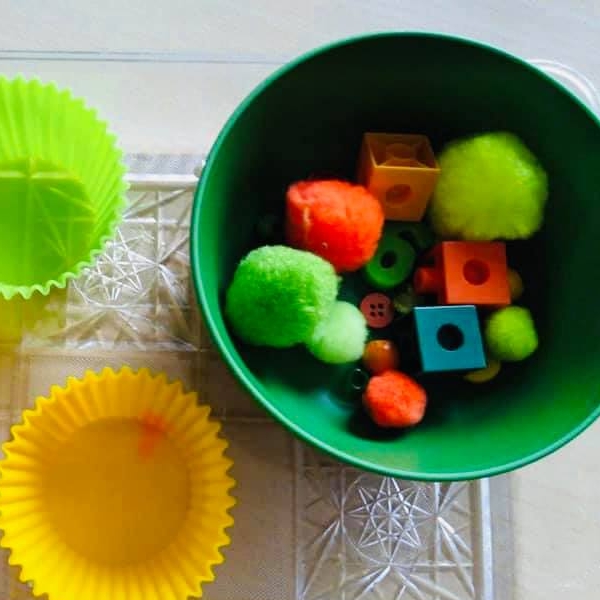
As Fort Mill’s top-rated Montessori school, Village Montessori & Preparatory School prides ourselves on creating a preschool and private kindergarten environment that provides a “whole child” approach to development: cognitive, spiritual, social, emotional and physical.
This development method allows for a dynamic prepared classroom environment that enables children of mixed age groups to explore a myriad of materials with differing levels of difficulty and learn as they are naturally inclined.
Whether in our infant room, preschool classrooms for 1-4 year olds, transitional kindergarten or private kindergarten, we emphasize and teach the whole child approach as developed by Maria Montessori.
In this blog we will be focusing on the Practical Life Area of our prepared classrooms and sharing ideas about how parents can create similar prepared learning environments in your own homes.
Practical Life Activities in the Prepared Classroom
The purpose of the Practical Life Activities in our prepared classrooms is two-fold:
- The prepared activities are meant to assist children in developing social skills and personal independence. Children learn to respect and take care of themselves and their environment and, in doing so, to respect and take care of others.
- The second purpose is to develop a child’s gross and fine motor movement, providing the foundation for every other facet of the learning environment.
Practical Life Activities are designed to encourage competencies in the following categories:
- Preliminary Activities
- Care and Respect for Self
- Care and Respect for the Environment
- Social Grace and Courtesy
- Fine Motor Skills
- Life Skills
All Practical Life Activities are uniquely purposeful and calming, and may appear simple and repetitive. However, if you were to observe a child as they perform such activities, you would notice:
- A high level of concentration - working on an activity for an extended period of time
- A developing sense of order - completing activities methodically from start to finish
- Pride in their work - showing you their completed work and/or demonstrating it for you
- Taking responsibility for any necessary cleaning - putting materials back where they belong in the classroom
- An increasing sense of independence - self-selecting activities and completing them independently
Practical Life Activities at Home
While the introduction to these Practical Life Activities may begin in our preschool and kindergarten classrooms, they are easily replicated at home. We invite you to try some of these fun, easy to set up activities and encourage your children to continue building their practical life activities in your own environment.
The following activities will help children work on their fine motor skills, color and shape recognition, and stimulate their senses:
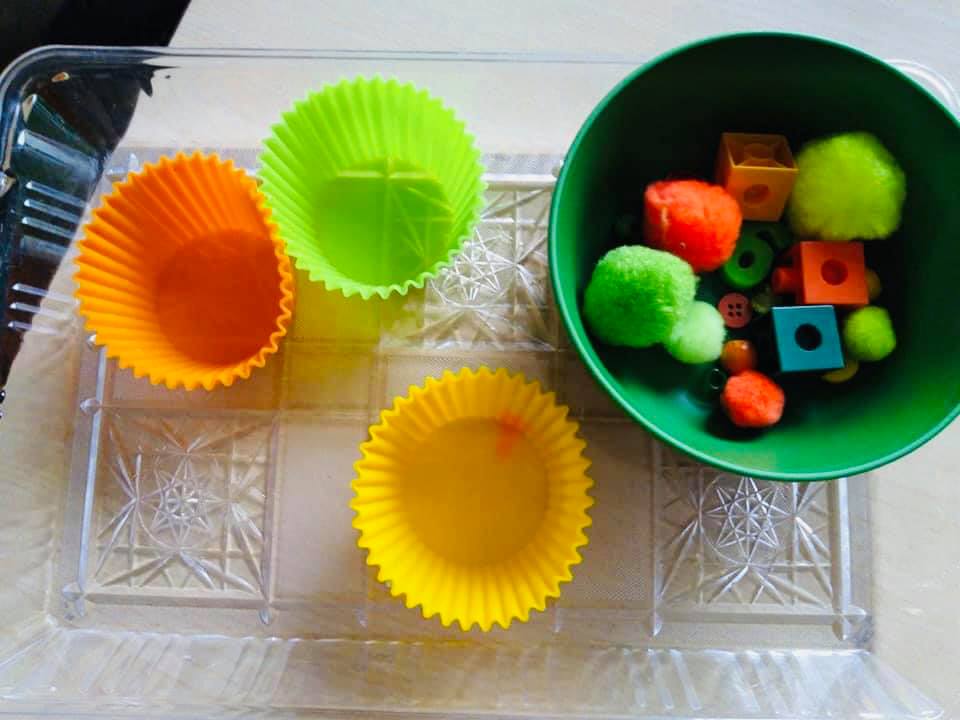 Sorting: Gather small cupcake liners, cups or bowls in a few colors. In a larger bowl, add a variety of small toys, balls, art supplies, etc. that match those same colors. Encourage your child to sort the items into the matching colored cupcake liner, etc.
Sorting: Gather small cupcake liners, cups or bowls in a few colors. In a larger bowl, add a variety of small toys, balls, art supplies, etc. that match those same colors. Encourage your child to sort the items into the matching colored cupcake liner, etc.
T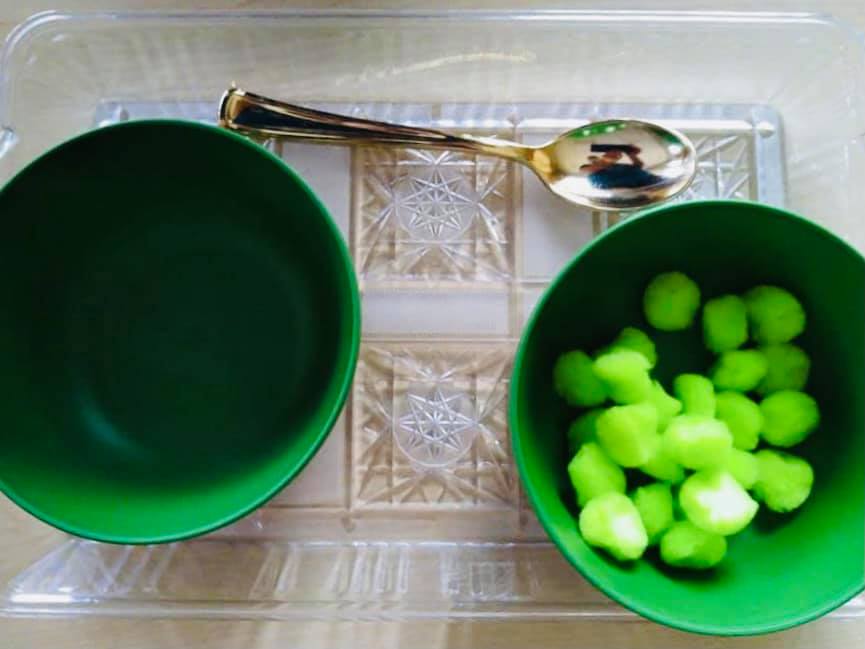 ransferring: Get two small bowls or containers. Add beads, puff balls, any small items easy to scoop with a spoon. Encourage your child to transfer the items using the spoon from one bowl to the other. You can also do this activity with small tongs.
ransferring: Get two small bowls or containers. Add beads, puff balls, any small items easy to scoop with a spoon. Encourage your child to transfer the items using the spoon from one bowl to the other. You can also do this activity with small tongs.
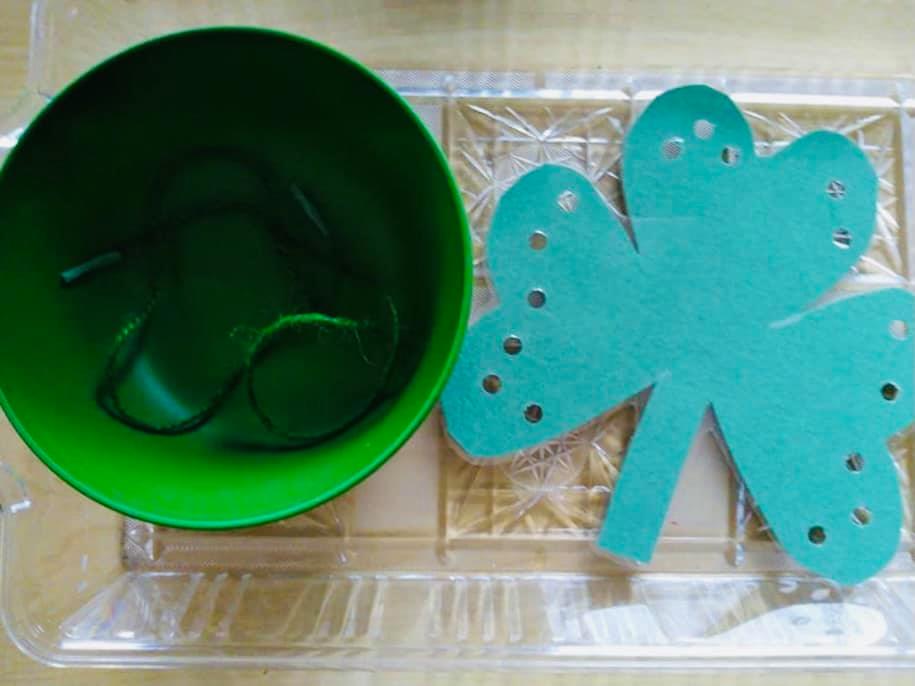 Lacing: Cut out a shamrock, or another fun shape such as a heart, circle, or square, and punch holes around the perimeter. Provide a shoelace or ribbon for your child and show them how to lace/weave the shoelace in and out of the punched holes.
Lacing: Cut out a shamrock, or another fun shape such as a heart, circle, or square, and punch holes around the perimeter. Provide a shoelace or ribbon for your child and show them how to lace/weave the shoelace in and out of the punched holes.
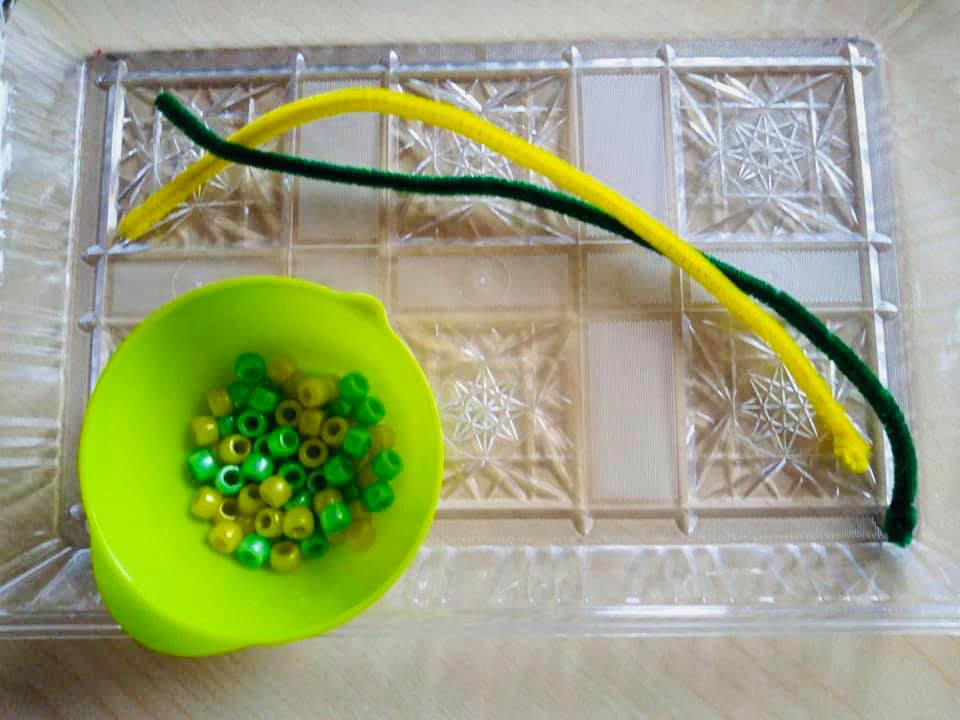 Bead Work: Add small beads in a variety of colors to a small bowl. Provide your child with a few pipe cleaners. Show them how to thread the pipe cleaner through the beads to create a pattern, a bracelet or a necklace. They can repeat the activity over and over again creating different patterns with the beads.
Bead Work: Add small beads in a variety of colors to a small bowl. Provide your child with a few pipe cleaners. Show them how to thread the pipe cleaner through the beads to create a pattern, a bracelet or a necklace. They can repeat the activity over and over again creating different patterns with the beads.
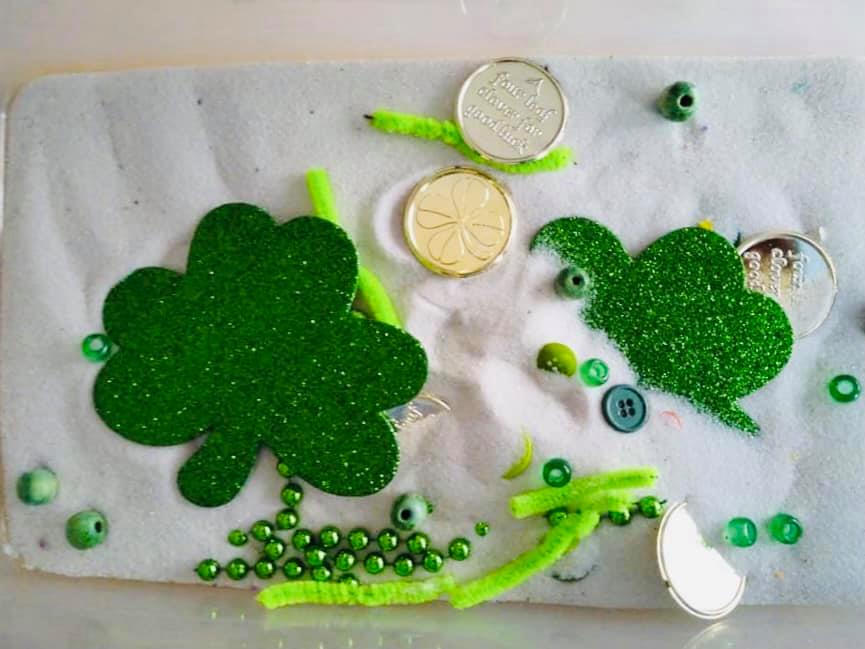 Sensory Bins: In a large bowl or plastic storage container add rice, beans, or sand (if you are brave!) and a variety of themed items such as small toys, plastic coins, buttons, beads, figurines, etc. Invite your child to find the items, scoop them out into smaller containers, arrange them in patterns, sort them, etc.
Sensory Bins: In a large bowl or plastic storage container add rice, beans, or sand (if you are brave!) and a variety of themed items such as small toys, plastic coins, buttons, beads, figurines, etc. Invite your child to find the items, scoop them out into smaller containers, arrange them in patterns, sort them, etc.
We hope you enjoy these ideas and creative ways to stimulate your child’s senses and fine motor skills at home!
To learn more about our Prepared Classrooms and Montessori Curriculum, we invite you to Schedule a Tour to visit our Fort Mill, SC location. We would love the opportunity to show you our school in motion!
Interactive & Manipulative Preschool Activities to Do with Your Child at Home
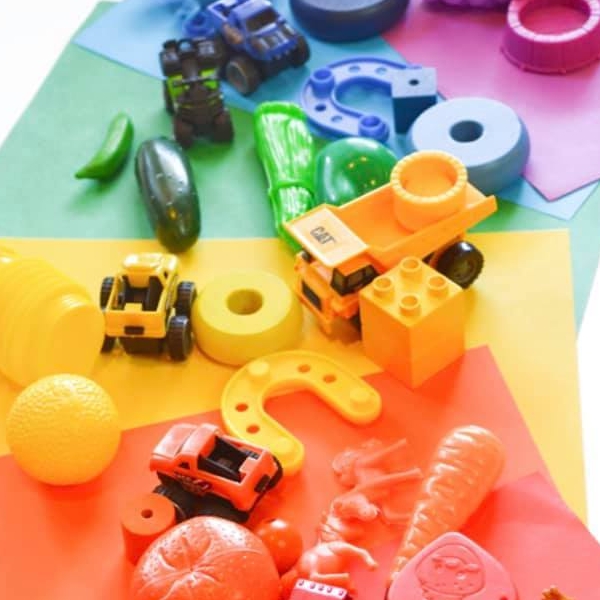
Interactive & manipulative preschool activities to do with your child at home
A great way to engage your preschooler at home is to create activities that build upon skills they’re learning in their classrooms - sensory bins, water work, sorting, and tracing, among others.
We’ve shared a few ideas below that we use in the Village Montessori & Preparatory School preschool classrooms and can be easily replicated at home.
Pouring Water Activities
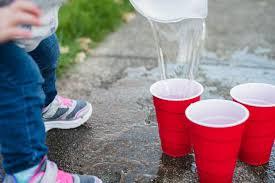
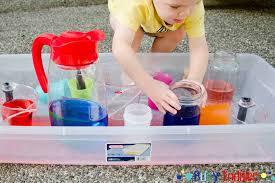
Pouring water activities allow children to finesse their fine motor skills, sense of measurement and depth, and eventually learn to pour water and drinks for themselves.
At school, we do this on small trays to catch overflow and splashes. At home, you could do this outside, in a sink, or on a baking pan.
Simply fill small cups with water (it’s fun to color it slightly too with food coloring) and provide different sized containers to transfer the water. Your children can learn to pour from containers that are the same sizes or learn that some sizes require different amounts of water to be filled and emptied.
When they are done, invite them to help empty all the containers, wash/dry them, and put the items away until they want to use them again.
Sorting Items By Color
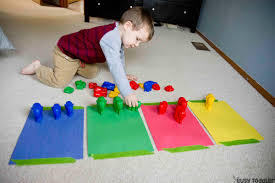
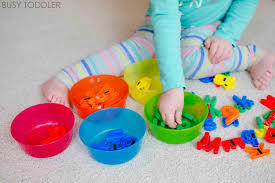
Sorting items by color helps your child develop the ability to recognize colors, color gradients, comparison, difference, and order.
Simply gather items from your home and place them in a box or on a pan. A mix of items creates an interesting array to sort.
Invite your child to choose one at a time and begin to sort them by color. They can place them in colored bowls, boxes or even on brightly colored paper that matches the colors of the items.
You can evolve this activity into sorting items by size, shape, use, where they are found in the house, etc. Or invite your child to create their own categories to sort from what has been gathered.
When they are done sorting items, invite them to help put items back and clean up!
Tracing Letters & Numbers
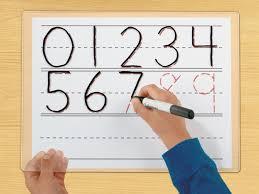
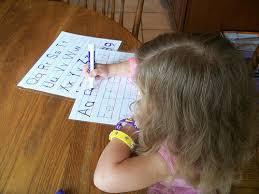
In our classrooms, children utilize a number of different materials to build literacy, letter and number recognition, and strengthen their fine motor skills.
One activity that is simple to replicate at home is having your child trace their name, letters, numbers, lines, and even pictures or coloring sheets. Not only does it help them develop their recognition, but it also helps develop hand control, their pincer grasp, and their ability to ultimately string letters together into words.
To do this activity you can print number and letter sheets, coloring pages, or a document with their name on it and slip them into a clear sheet protector. Choose colorful dry-erase markers for them to use and a small cloth for them to clean their surface between uses.
If you don't have clear sheet protectors you may also simply have them trace items with colorful crayons or markers.
To learn more about our Classroom Activities and Montessori Curriculum, we invite you to Schedule a Tour to visit our Fort Mill, SC location. We would love the opportunity to show you our school in motion!
The Unique Super Powers of a Child with ADD/ADHD

Oftentimes, teachers are challenged by the exceptional students in their classrooms. These exceptionalities come in many forms. One of the more common differences you may see is a child with ADD/ADHD.
These students may require extra effort on the part of the teacher to adapt to their learning style and help them thrive in the classroom. It is my experience that children with ADD/ADHD also contribute many new and exciting opportunities to the classroom.
I like to tell children with any learning difference they have a "super power" and are all gifted by God to be exactly who He needs them to be.
Sometimes those gifts are energy and creativity that can challenge the "normal" classroom. That same energy and creativity can yield something innovative in the future they might contribute to. By not always seeing things the same way their peers do, these exceptional students add a different lens and way of seeing the world.
Instilling grit and perseverance to match the energy of these gifted students is one of the best things we can do for them as educators. We should strive to help them learn who they are, highlight their unique gifts, and focus on the flavor they add to the environments around them.
As teachers, we have the duty to empower these children and the opportunity to witness them bloom into learners that can succeed and thrive in any environment.
The following article below outlines the gift of having these dynamic children in the classroom: Why I Love Teaching Kids with ADHD.
-----------------
If you are exploring Learning Intervention Services or Educational Support for your child, we invite you to learn about the programs we have at Village Montessori & Preparatory School in Fort Mill, SC. We offer both individual and small group services after school between 3:00 - 6:00 pm.
We also offer specific programs for elementary school students in the areas of literacy and math: Elementary School Literacy Leaders (Tuesdays from 3:00-4:00 pm) and Elementary School Math Masters (Thursdays from 3:00-4:00 pm).
All services are provided by Mrs. Stacy Atkinson, VMPS Education Director & Learning Interventionist. Mrs. Atkinson holds an M.Ed. in Exceptional Student Education with a concentration in Educational Therapy. She is also a licensed Educational Therapist and her training is accredited by the International Dyslexia Association. Mrs. Atkinson has experience working with preschoolers up to college aged students as an academic coach, tutor and educational therapist.
- By Mrs. Stacy Atkinson - VMPS Education Director & Learning Interventionist
Creating a Calm and Respectful Environment in the Montessori Classroom
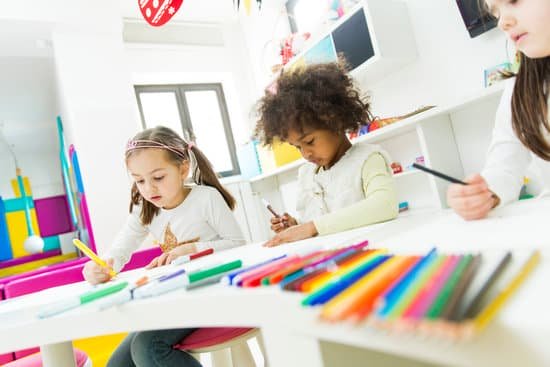
Our mission at Village Montessori & Preparatory School in Fort Mill, SC is to lay the foundation for developing productive, independent, and respectful lifelong learners through the combined Montessori & Balanced Literacy curriculums. Rooted in holism, our philosophy aims to foster intellectual, spiritual, emotional, social and physical development to prepare children for their educational journey and for life.
Maria Montessori’s entire approach to education was rooted in holism – focused as much on the immaterial (matters of the heart, psyche and spirit) as the material (learning by manipulating works with the five senses and developing motor skills). Just as man is not one-dimensional, but is made up of immaterial aspects and physical material.
Montessori offers a true “whole child” approach to development: cognitive, spiritual, social, emotional and physical. This method enables children of mixed age groups to explore a myriad of materials with differing levels of difficulty and learn as they are naturally inclined.
It also fosters a child’s leadership and followership skills. Older children solidify their understanding of material they have mastered as they help younger children with their work and younger children have a heightened desire to complete a work if an older child is assisting.
To create a sense of readiness for learning and respect in the classroom, we create a calm, loving, soothing classroom environment. Quiet music is played during lessons and naps. Bells are used to reset the classroom when needed. Teachers speak to students in a hushed voice, mirroring the environment in which they are creating.
In fact, we follow much of what is shared in the following blog post from the North American Montessori Center (NAMC) to enable children to reset themselves and learn a greater respect for their teachers and their peers. The goal is to not only create an environment that shows respect for learning but to also prepare children to mirror and respect these behaviors outside of the school environment.
NAMC Blog: "Encouraging Quiet in the Montessori Environment: Alternatives to Shush"
Our Global Diversity Program
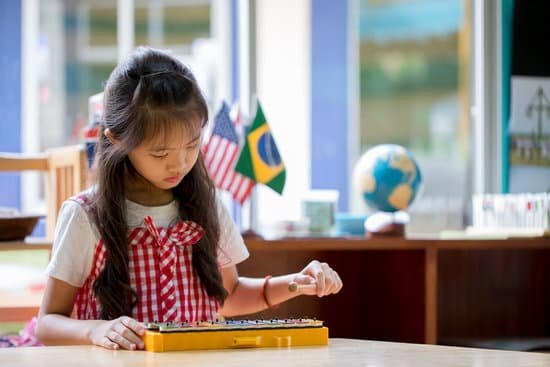
AROUND THE WORLD CELEBRATION
We are excited to share more about our culture and diversity program, which includes highlighting a different country every month for Art, Veggiecation, Music, and our Montessori work cycles.
We have chosen a number of countries from the major continents of the world and look forward to exploring them with your students. In addition to learning more about each country, we will also highlight people from those countries who have shaped our world in a positive way.
The United States of America was our country theme for October.
You may have seen artwork coming home from your children celebrating American Pop Art, Fall themed projects, and American celebrations of the season. The children tried pumpkin smoothies and fall vegetables in Veggiecation and celebrated the Halloween holiday with their classmates and families at our Halloween Haunt fall festival.
Italy is our featured country for November.
We will explore Italy geographically and culturally through our Montessori work cycles and classroom activities. We will also learn more about Italian culture through enrichment in Art, Veggiecation and Music.
Just this week your children sampled different varieties of tomatoes in Veggiecation and learned about the many ways Italians use tomatoes in their world famous dishes. Next week they will explore European artists and music.
Fun Montessori Weekend Activities for Home
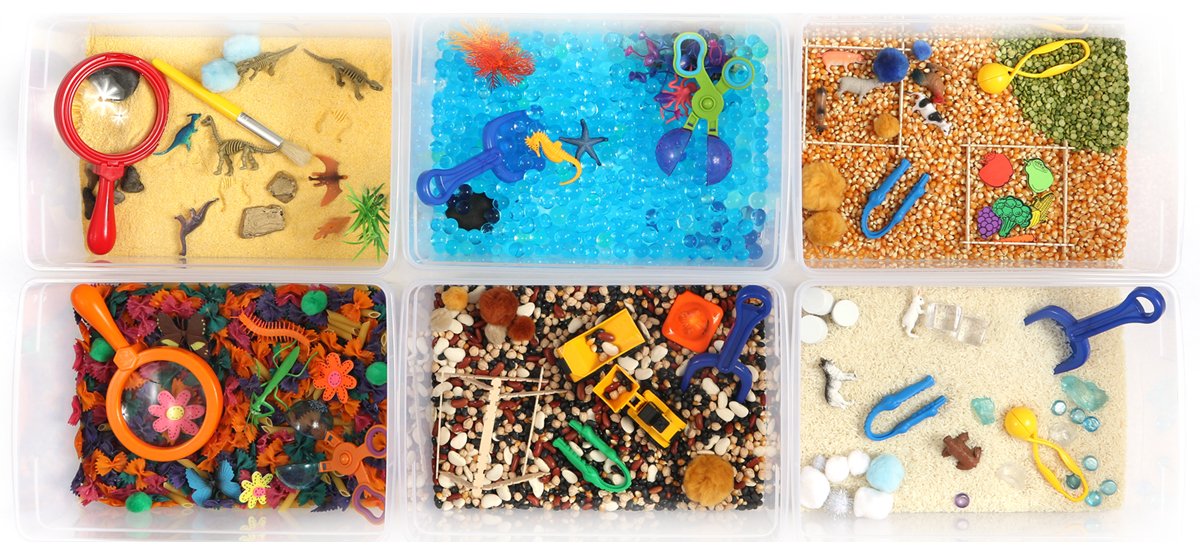
Fun fall weekend activities to do with your child...
Go on a nature walk with your child and allow them to carry a bucket or bag...or re-purpose that plastic Halloween pumpkin used for trick or treating.
Have them collect items that remind them of fall - anything goes! Then place items in a small bin to make a sensory bin. You can use different colored rice (did you know there’s black rice?!) or dry beans, lentils or seeds to make the bin extra satisfying.
There are several skills to work on here:
▪ If your child is not yet writing or has a pincer grasp in need of strengthening, have them bury objects and pick them out with tongs or tweezers.
▪ If your child loves to play guessing games, blindfold them and work those stereognostic skills by having them try to name the object by touch.
▪ If you’re working on colors, have them match a bin object to a crayon or marker and say the name of the color as they're matching.
▪ Need an extension? Have them match the colored object to its color name that you’ve written on a sticky note.
There are so many fun things that fall offers and many of these things are found right in nature!
For more sensory bin ideas VISIT HERE.
The Montessori Method & 5 Areas of The Prepared Classroom
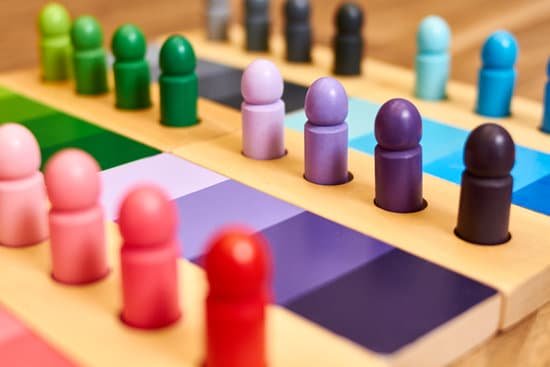
WE INVITE YOU TO TAKE A PEEK INTO OUR CLASSROOMS!
At Village Montessori & Preparatory School in Fort Mill, SC, we are more than a childcare or preschool. We are an actively engaged Montessori School that supports families and children looking for a dynamic, safe, well-rounded education for their children that teaches independence and school readiness.
Below we have shared how the Montessori Method and the 5 Areas of the Prepared Classroom at Village Montessori enable independent work and exploration. You will see how these works are designed in each of the 5 core areas of the classroom and our approach to Balanced Literacy.
THE MONTESSORI METHOD
.jpg) Maria Montessori’s entire approach is rooted in holism – focused as much on the immaterial (matters of the heart, psyche and spirit) as the material (learning by manipulating works with the five senses and developing motor skills). Just as man is not one-dimensional, but is made up of immaterial aspects and physical material.
Maria Montessori’s entire approach is rooted in holism – focused as much on the immaterial (matters of the heart, psyche and spirit) as the material (learning by manipulating works with the five senses and developing motor skills). Just as man is not one-dimensional, but is made up of immaterial aspects and physical material.
The Montessori Method offers a true “whole child” approach to development: cognitive, spiritual, social, emotional and physical.
This method enables children of mixed age groups to explore a myriad of materials with differing levels of difficulty and learn as they are naturally inclined. It also fosters a child’s leadership and followership skills. Older children solidify their understanding of material they have mastered as they help younger children with their work and younger children have a heightened desire to complete a work if an older child is assisting.
5 AREAS OF THE PREPARED ENVIRONMENT
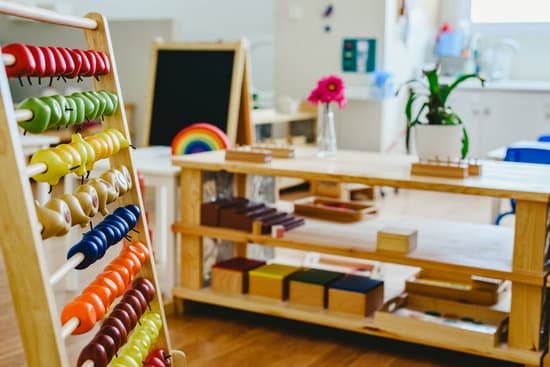 Classrooms at Village Montessori contain Montessori materials prepared on child-sized shelves and displayed in 5 Key Areas of The Classroom: Practical Life, Sensorial, Mathematics, Culture and Science, and Language Arts.
Classrooms at Village Montessori contain Montessori materials prepared on child-sized shelves and displayed in 5 Key Areas of The Classroom: Practical Life, Sensorial, Mathematics, Culture and Science, and Language Arts.
Although the areas and work within the areas build upon one another, no subject is taught in isolation. The whole classroom is accessible to the children at all times and once a child receives a presentation on a particular work, he or she is welcome to choose the work independently going forward.
PRACTICAL LIFE
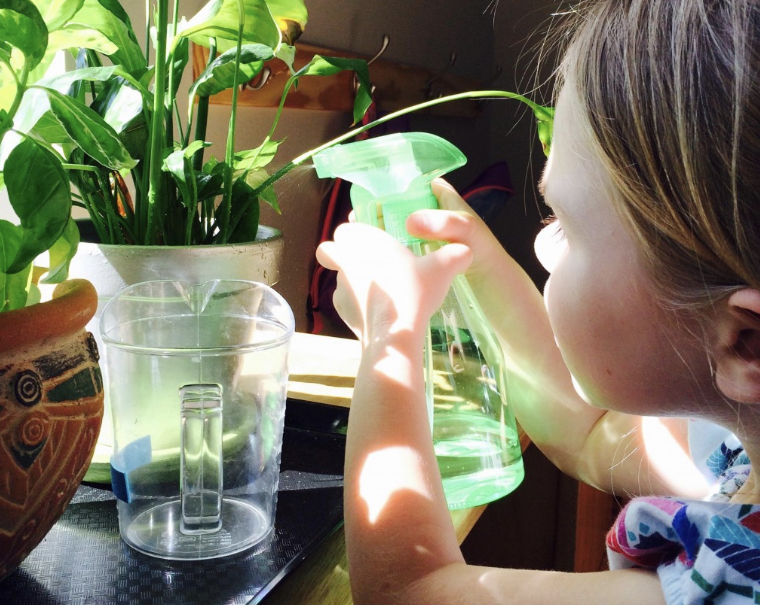 The purpose of the practical life area is two-fold: The activities are to assist the child in developing social skills and personal independence. Children will learn to respect and to take care of themselves and their environment, and to respect others. The second purpose is to develop the child’s gross and fine motor movement that will provide the foundation for every other facet of the learning environment.
The purpose of the practical life area is two-fold: The activities are to assist the child in developing social skills and personal independence. Children will learn to respect and to take care of themselves and their environment, and to respect others. The second purpose is to develop the child’s gross and fine motor movement that will provide the foundation for every other facet of the learning environment.
All Practical Life Activities are uniquely purposeful and calming, and may appear simple and repetitive. However, if you were to observe a child as they perform such activities, you would notice a high level of concentration; a developing sense of order (putting materials back where they belong); pride in their work; taking responsibility for any necessary cleaning; and increasing sense of independence.
Activities may include watering and caring for flowers and plants, cleaning up one's work space, putting away their Montessori work as it was originally found, caring for their own belongings in the classroom, learning to care for classroom spaces, etc.
Practical Life Activities are designed to encourage competencies in the following categories: Preliminary Activities; Care and Respect for Self; Care and Respect for the Environment; Social Grace and Courtesy; Fine Motor Skills; and Life Skills.
SENSORIAL DEVELOPMENT
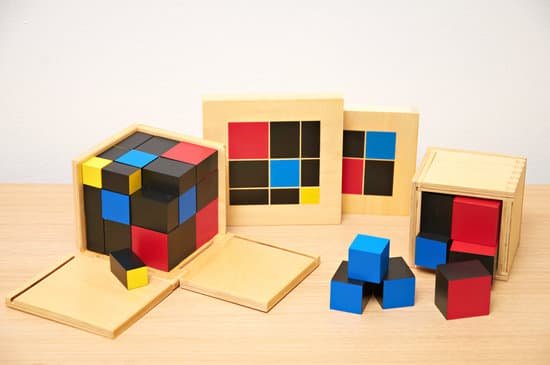 Sensorial training provides a basis for learning in an orderly manner, which prepares children’s minds for mathematics. The materials refine the senses and develop cognitive skills such as thinking, judging, associating, and comparing.
Sensorial training provides a basis for learning in an orderly manner, which prepares children’s minds for mathematics. The materials refine the senses and develop cognitive skills such as thinking, judging, associating, and comparing.
Activities include visual discrimination by size, color, shape, etc., discrimination by audibility, smell, texture and heat conducting properties, pattern recognition and sequencing.
MATHEMATICS
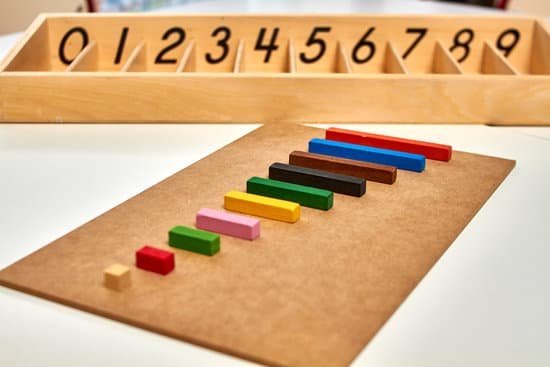 The Practical Life and Sensorial materials in the classroom prepare a child’s mind for Mathematics. Practical Life work offers sequence, and practice with processes. It appeals to a child’s intellect because it has a purpose and a child completes it with order and precision.
The Practical Life and Sensorial materials in the classroom prepare a child’s mind for Mathematics. Practical Life work offers sequence, and practice with processes. It appeals to a child’s intellect because it has a purpose and a child completes it with order and precision.
Sensorial work is done with exactness. It engages a child’s mind to classify experience and this classifying (using the five senses to discriminate by dimension, weight, smell, etc.) enables a child to draw conclusions. Further, sensorial work lays the foundation for math by preparing the mind for the study of sequence and progression.
Math is taught in this order: numbers through ten, the decimal system, counting beyond ten, memorizing the arithmetic tables, passage to abstraction (working with more symbols on paper and with less of the concrete math material) and fractions. There is overlap amongst the last groups of lessons.
LANGUAGE ARTS
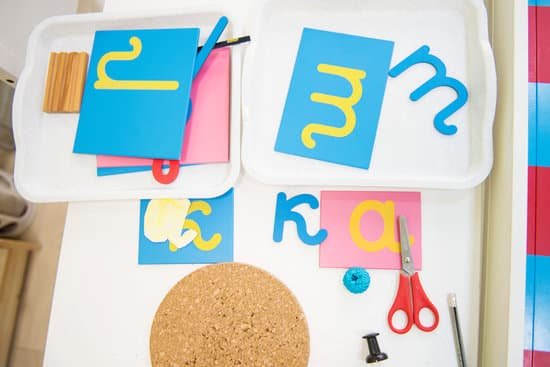 The first eight years of a child’s life are the critical years for literacy development. Exposing children to a literacy-rich environment begins with reading aloud. Reading aloud to children, especially with enthusiasm and inflection of the voice, facilitates children’s readiness for formal reading instruction in four areas: oral, cognitive skills, concepts of printed words, and phonetic awareness.
The first eight years of a child’s life are the critical years for literacy development. Exposing children to a literacy-rich environment begins with reading aloud. Reading aloud to children, especially with enthusiasm and inflection of the voice, facilitates children’s readiness for formal reading instruction in four areas: oral, cognitive skills, concepts of printed words, and phonetic awareness.
A Montessori language arts program combines phonics with a whole language curriculum. Phonics is defined as a method of teaching children to read, write and pronounce words by learning the phonetic value of letters, letter groups and syllables. Whole language indicates that children will learn to read and write by being immersed into a world of spoken and written words.
We utilize the Balanced Literacy reading program to compliment the Montessori materials, which contains both approaches. In addition to reading activities like reading aloud, our students have the opportunity to foster language arts skills through public speaking, show and share, telling a story about pictures and experiences, seeing printed labels, tracing, coloring and writing.
CULTURE & SCIENCE
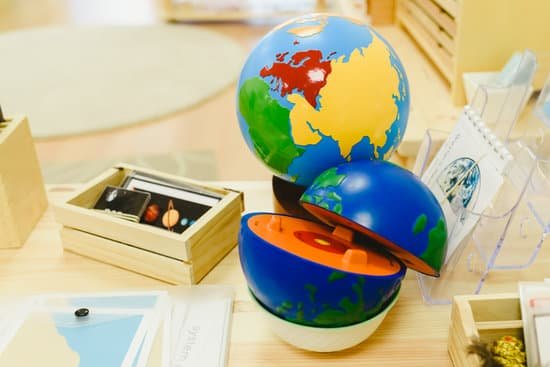 It is important for young children to learn about history, their environment, nature and science to help them understand their place in the world and spark their curiosity in the world itself. As in all areas of the Montessori classroom, Culture and Science materials and concepts are presented in the most natural, life-like or realistic way possible.
It is important for young children to learn about history, their environment, nature and science to help them understand their place in the world and spark their curiosity in the world itself. As in all areas of the Montessori classroom, Culture and Science materials and concepts are presented in the most natural, life-like or realistic way possible.
For example, we will place real caterpillar eggs with food in a butterfly cage to observe the lifecycle of the butterfly in addition to reading about it and discussing the stages as a group. Materials include topics about Geography, Introduction to History, Introduction to Botany, Introduction to Zoology, and Introduction to Science.
